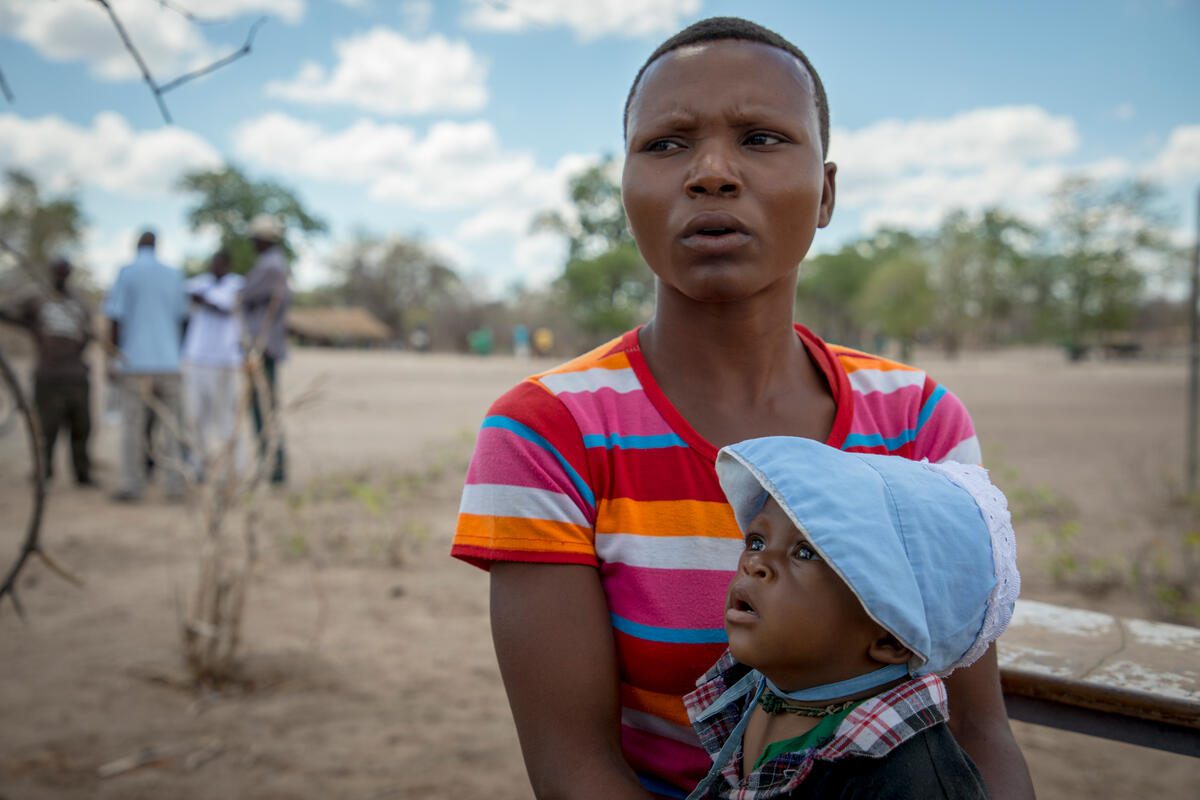Zimbabwe
Dry and Hungry
Unprecedented drought and a tumbling economy have left half the population without enough food.
WFP/David Orr
Make a difference in Zimbabwe
Full-Blown Humanitarian Crisis
Zimbabwe’s hunger emergency is driven by climate change and economic collapse. It has the highest inflation rate in the world and is gripped by drought. There are fuel shortages, widespread poverty, a lack of clean drinking water, power outages, and now coronavirus on top of it. Today, 7.7 million people are in the throes of hunger. WFP is rapidly ramping up its emergency assistance to reach as many as 4.1 million of the hardest hit families.
2/4
Two of the capital’s four reservoirs are empty due to lack of rain
15M
70% of children under the age of two suffer from anemia
50%
The country’s corn production has been reduced by 50% this year
2/4
Two of the capital’s four reservoirs are empty due to lack of rain
15M
70% of children under the age of two suffer from anemia
50%
The country’s corn production has been reduced by 50% this year
2/4
Two of the capital’s four reservoirs are empty due to lack of rain
Causes of Hunger
Extreme Weather
Zimbabwe is in the grips of back-to-back climate-related disasters. First, Cyclone Idai struck in March of this year, causing massive flooding and landslides. Now, six months later, in a cruel irony, the country is facing extreme drought in the middle of peak farming season. “We are facing a drought unlike any that we have seen in a long time,” said WFP’s Executive Director David Beasley. “We are talking about people who truly are marching towards starvation if we are not here to help them.”
Learn More Currency Shortage
Zimbabwe is suffering from a severe cash crunch, with a near total lack of physical currency. The government passed legislation in June 2019 banning the use of the U.S. dollar for local transactions and instead implemented the Zimbabwe Dollar (ZWL) as the only acceptable national currency. Retailers are struggling to buy basic food imports because the vast majority of suppliers won’t accept the ZWL. People’s faith in the new currency as well as their purchasing power is massively depleted as prices increase at a rate not seen in over a decade.
Learn More Economic Crisis
A severe economic crisis is adding to people’s misery. It’s caused inflation to skyrocket and the value of Zimbabwe’s currency to plummet. Over the last decade, the country has experienced a number of similarly crippling economic, environmental and political upsets. These challenges make Zimbabwe’s food security situation alarming – it ranks 107 out of 119 countries on the 2018 Global Hunger Index.
Learn More Malnutrition
Micronutrient deficiencies are prevalent throughout Zimbabwe, including a 70 percent prevalence of anemia among children under the age of two, largely driven by poor dietary diversity. Eight of Zimbabwe’s 59 districts have acute malnutrition rates over five percent, which is unprecedented.
Learn More Poor Harvests
A poor harvest in 2014-2015, a historic drought in 2015-2016, and the second-worst cyclone on record in 2019 have brought the agricultural sector to its knees. The consequences for the population are dire, chiefly because 80 percent of Zimbabweans depend almost entirely on rain to feed their crops and livestock. Below-average rainfall is in the forecast again for January-March 2020, the main growing season ahead of the April harvest. With the 2019 corn harvest down by over 50 percent in 2018, it’s less than half the national requirement.
Learn More  WFP/David Orr
WFP/David OrrHow Climate is Hindering Progress

Withered Crops
Charles Muzamba, a beneficiary of WFP’s Lean Season Assistance program, stands in front of his empty field that should have crops at least a meter high by this time in the season.

Dry Dams
This dam was built through WFP’s Productive Asset Creation program and had served as a key source of water for the community. It’s water is now too low to reach the catchment.

Struggling Farmers
More than two-thirds of Zimbabweans are subsistence farmers who rely on a single, increasingly unreliable rainy season to grow corn. WFP is actively promoting a transition to more nutritious, indigenous and drought-resistant crops like sorghum and millet.
Lastest News
- News Release
- December 17, 2020
- News Release
- September 30, 2020
- News Release
- July 30, 2020




